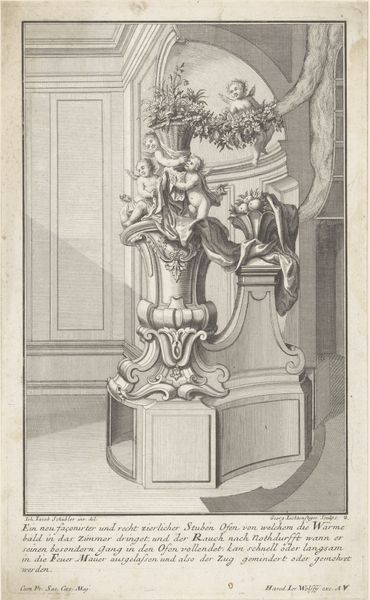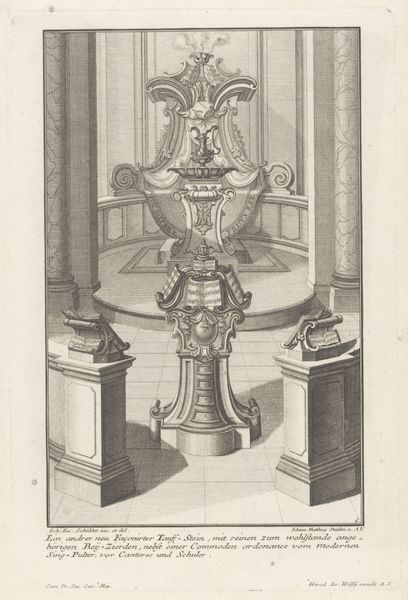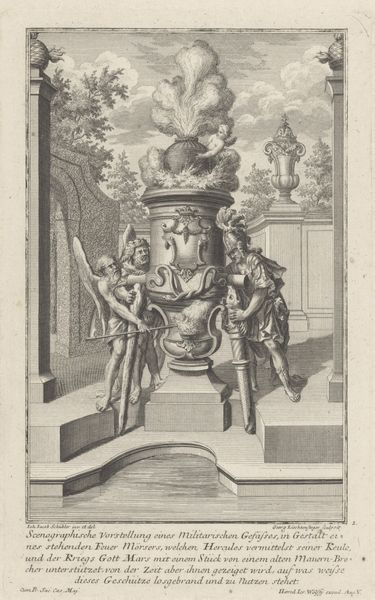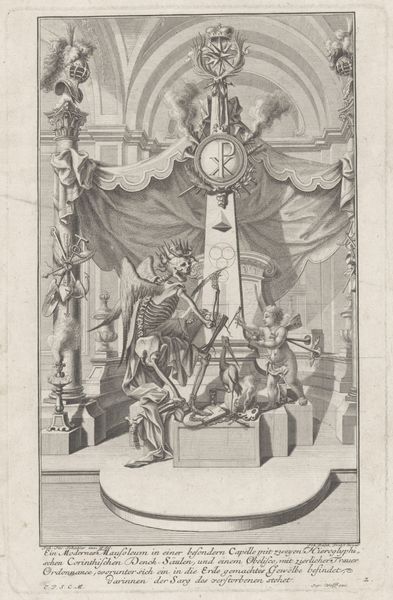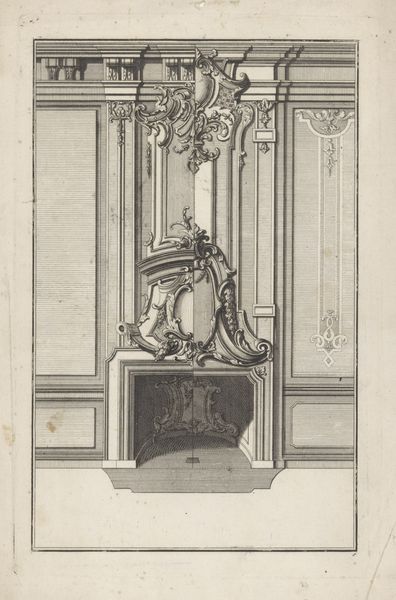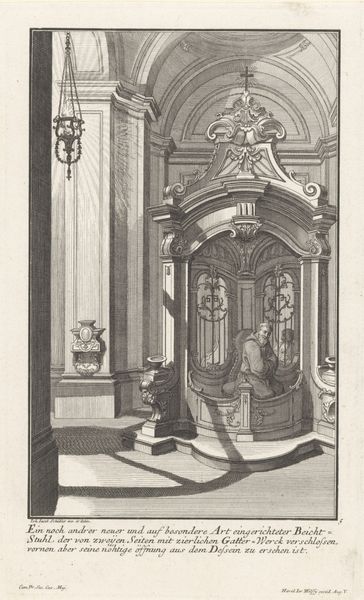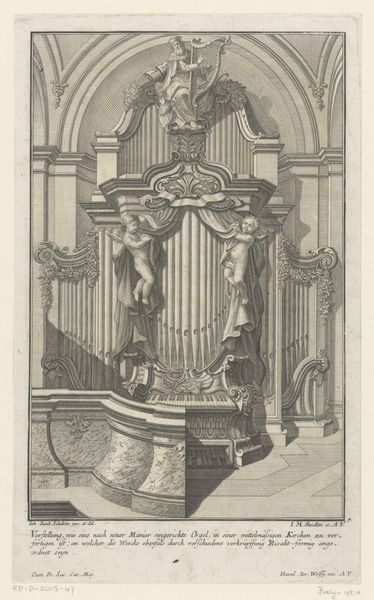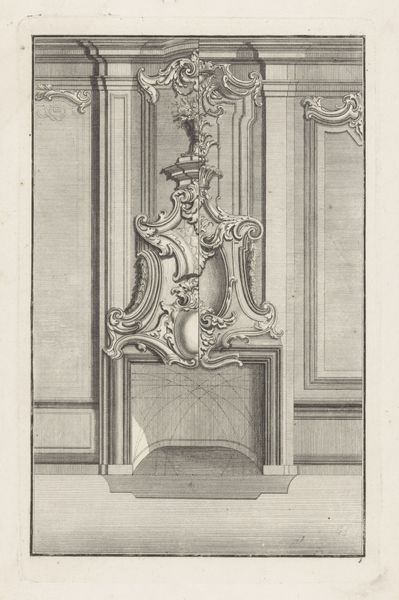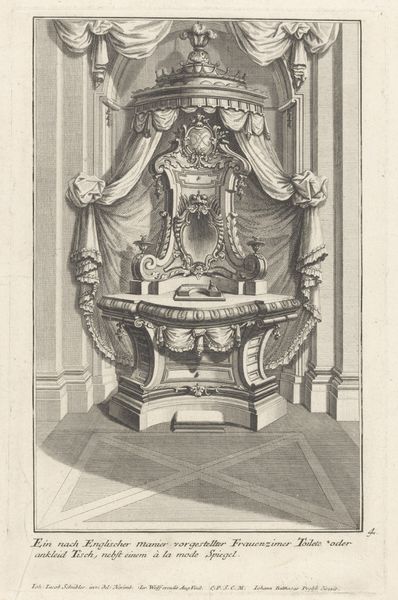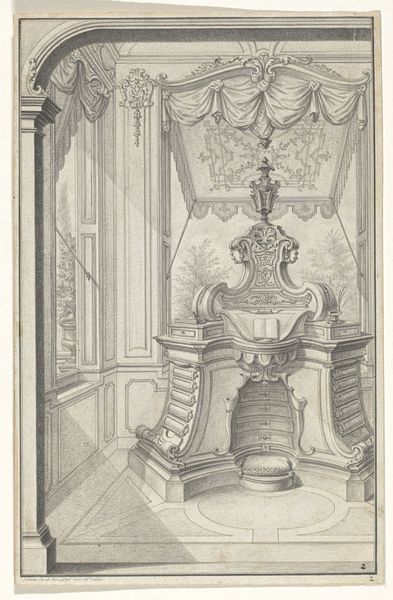
print, metal, engraving
#
weapon
#
baroque
# print
#
metal
#
pencil sketch
#
history-painting
#
engraving
Dimensions: height 290 mm, width 178 mm
Copyright: Rijks Museum: Open Domain
Curator: Georg Lichtensteger's print, "Schouw met wapens en harnas," dating from after 1724, really strikes me with its subject. What’s your first reaction to this scene depicted at the Rijksmuseum? Editor: The detail is incredible. The way light and shadow define the armor really makes the scene feel somber and monumental, almost stage-like, with the large room receding into darkness on either side of the figure.. It makes you think about death and glory, doesn’t it? Curator: Absolutely. It’s vital to consider this print as part of a wider historical and cultural fascination with weaponry and martial prowess. Arms and armor often transcended their practical function, becoming symbols of power and status within a highly structured social hierarchy. How was the armour produced? Where and by whom? It also brings attention to metal and metalwork practices. Editor: Precisely. Beyond mere craftsmanship, the creation of armor involved a whole network of social players—artisans, patrons, even the warriors themselves. Consider the market for arms, its circulation both economically and symbolically... This print gives insight to its status! Curator: Indeed. Lichtensteger captures this very idea! Think about how the armor—itself a product of meticulous labor—becomes art. We often forget the sheer amount of skill and labor embedded in these objects. This print immortalizes the work! Editor: And the social values attached! The choice to display weapons prominently, either in artistic representations or in domestic settings, reflects cultural ideals about heroism, defense, and aristocratic identity. How has conflict played its part within these representations? Curator: Right, the act of creating such an image, a print readily reproducible and disseminated, contributes to reinforcing those ideals on a wider social scale. But I feel that its political role, in both a domestic and even international context, is often downplayed, too. Editor: A poignant piece then, for exploring craftsmanship and labor, but also political power and status. It’s not just about pretty armor! Curator: Definitely something to consider about the manufacturing processes and how it communicates ideals around martial identity and social hierarchy within 18th-century culture.
Comments
No comments
Be the first to comment and join the conversation on the ultimate creative platform.
